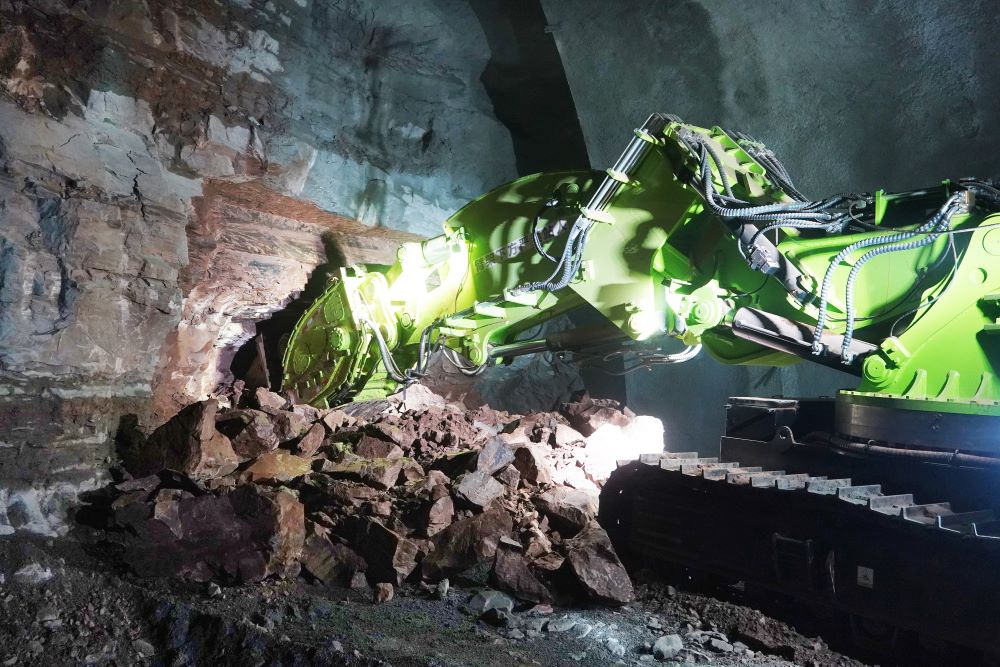In tunnel penetration, mine development and other projects, tunnel boring machines are like steel giants that open up new frontiers and are the core equipment that determines the progress and quality of the project. Faced with complex and diverse geological conditions and engineering requirements, tunnel boring machines have evolved into many different types. So, what types of tunnel boring machines are there, and what are their respective characteristics? The following is a detailed introduction to the types and characteristics of tunnel boring machines.

I. Classification by cross-section excavation method
1. Full-section tunnel boring machine (TBM)
Full-section tunnel boring machines can complete the excavation of the entire tunnel section at one time. They are suitable for medium-hard rock to hard rock formations and are widely used in large-scale tunnel projects such as railways, highways, and water conservancy.
① Open TBM:
Through anchor rods, steel arches and other support and reinforcement of surrounding rocks, it is suitable for hard rock formations with good stability. It has the characteristics of fast excavation speed (up to 3-5 times that of drilling and blasting) and high hole quality.
② Shield TBM:
- Single shield: Relying on prefabricated segments for support, suitable for short-distance soft rock or broken zone tunnels.
- Double shield: Combining the advantages of open and shield types, it can flexibly cope with soft and hard alternating strata, and achieve synchronous excavation and support.
2. Partial section TBM
Mainly cantilever type TBM, the section excavation is completed by cutting the cutting head in batches, which is suitable for coal roadway, semi-coal rock roadway and small tunnel.
① Longitudinal axis type: The axis of the cutting head is parallel to the cantilever, suitable for cutting coal rock with hardness ≤9, high drilling efficiency, but poor stability of hard rock.
② Horizontal axis type: The axis of the cutting head is perpendicular to the cantilever, with small vibration, suitable for semi-coal rock or rock strata with compressive strength ≤100MPa, and can cut out a flat roadway.
II. Classification by application scenario and structure
1. Shield machine
Mainly used in water-bearing strata such as urban subways and soft soil tunnels, and the working face is stabilized by pressure balance technology.
① Earth pressure balance shield: Uses slag pressure to balance the stratum, suitable for clay and sandy soil layers.
② Mud-water balance shield: Through mud pressure support, it is suitable for high water pressure and large-grained gravel strata.
③ Special-shaped shield: Including special cross-section designs such as rectangular and horseshoe shapes, used for subway stations, integrated pipe corridors, etc.
2. Special types of tunnel boring machines
① Multi-mode shield machine: Can switch earth pressure/mud water/TBM mode to adapt to complex geological conditions.
② Micro tunnel boring machine: 2-4 meters in diameter, used in narrow spaces such as municipal pipelines and cable tunnels.
③ Plateau high-cold tunnel boring machine: Equipped with low-temperature resistance and anti-hypoxia system, it is specially used for high-altitude tunnel engineering.
III. Classification by applicable rock formation
1. Coal tunnel boring machine: cutting hardness ≤4, dedicated to coal mine tunnels, light structure.
2. Coal-rock tunnel boring machine: cutting hardness ≤6, taking into account both coal and soft rock, equipped with reinforced picks and hydraulic systems.
3. Rock tunnel boring machine: cutting hardness ≥8, using high-strength tools and anti-vibration structure, such as hard rock TBM.
Different types of tunnel boring machines have different application scenarios in engineering construction. When choosing a tunnel boring machine, it is necessary to comprehensively consider factors such as geological conditions, tunnel diameter, construction requirements, and environmental protection standards.




